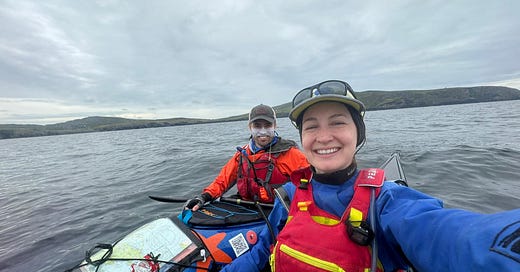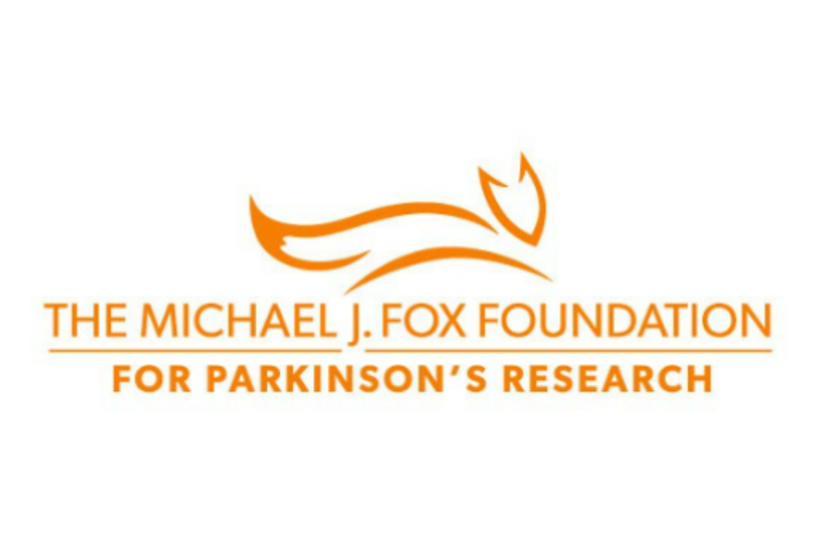Living on the southwest corner of Ireland puts me right in the middle of arguably the most committing and exposed section of the entire trip. This is a good place to get comfortable with the remoteness and intensity that make sea kayaking around Ireland so challenging.
Getting out on the water here with visiting paddlers reminds me how much I’ve normalized the swell and sea cliffs and how a mild day here would be extreme in many other places.
This summer, with my own trip on hold, I’ve had a chance to follow and support others making their way around Ireland and lend local knowledge to their planning.
Last weekend, still jet-lagged, I had a chance to share a few miles with Ariel, an American paddler who started in Dublin last month, going clockwise. She paddles a Rockpool Taran in Orca black & white with sparkles in the deck paint. Her boat’s name and callsign is “Pacific Selkie” a nod to her home waters and the women of Irish & Scottish lore whose true home is in the sea.
In her selkie summer, she says, “The sea is dictating everything I do.” She is taking a slow, steady, scenic approach, giving herself 90 days, taking in culture and nature along the way.
This kind of trip produces much better photos and stories. I would highly recommend following her updates.
Mighty Mizen
Mizen Head is considered the most southerly point on the Island of Ireland. Technically, nearby Brow Head juts out a few meters farther but lacks Mizen’s history and navigational importance. This is where the Celtic Sea ends, and the North Atlantic begins. For sailors and sea kayakers going around Ireland, it’s where our compasses start pointing North.
In the words of the Irish sea kayaking guidebook Oileáin, Mizen is “a place of strong tides, big seas, and a real feeling of exposure.” Due to its window to swell from nearly the whole Atlantic and an underwater shelf that amplifies sea and tide, Mizen is the site of countless wrecks. In some cases, the waves would smash a ship on the headland so violently that the vessel broke into pieces too small to be identified. Before modern lifeboat services, survivors would have been rare——there are no safe landings for miles.
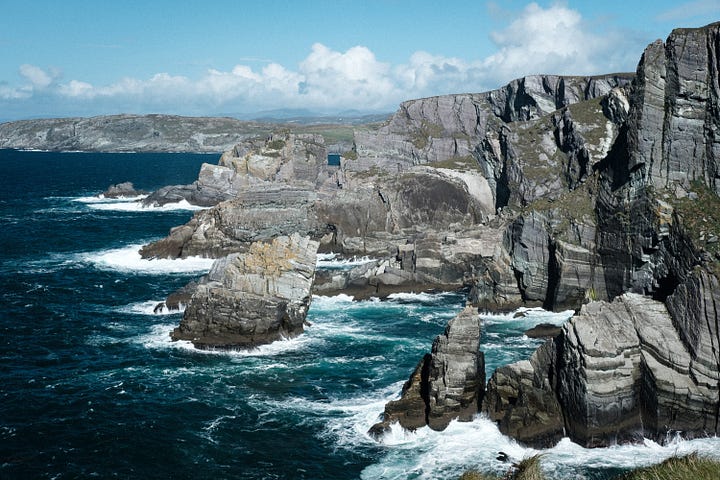
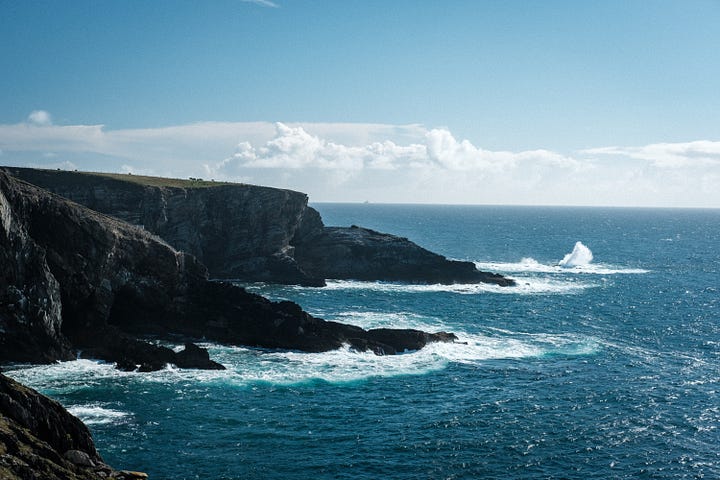
Salvage and wrecking supplemented the local economy well into the 20th century. An old saying goes, “We’ll starve for Christmas, or we may have a wreck and be full and plenty.” (Source: Mizen Head Visitor’s Centre)
Modern weather forecasting has made it easier to avoid coming to grief in this notorious spot. But you still have to pick your day, respect the water, and exercise a bit of “cop on,” as they say in West Cork.
Even though it’s right around the corner from me, I’ve only been around Mizen Head once, and that was with a group at slack tide on the calmest day of the summer.
Chess not checkers
This time, I got to experience Mizen in expedition mode, working with acceptable conditions (the wind dropped, but the forecast had it picking up). Ariel and I ran with the end of a neap tide rather than wait for slack water and risk encountering an afternoon sea breeze mid-crossing off Bantry Bay.
This is the kind of constant decision-making and risk calculation that makes the mental challenge of expedition paddling so much more exhausting than the physical aspect.
Beyond Mizen Head, The “fingers” in the southwest corner of Ireland are a series of cruxes that require tenacious paddling and good seamanship. Mentors of mine have described the strategy for this section of coast as “chess moves.”
You’re constantly asking yourself, “Working with the forecast I have, what can I do today to set myself up for the next 3-4 days?”
Getting around a crux-y corner a day early with a little extra effort could save you a week as bad weather closes in.
Last summer, David and I managed to get from Bantry to Doonbeg, Co. Clare (over 250km) in just 5 days using this strategy. Weather windows kept closing behind us, but we made the right moves to get around critical sections in time.

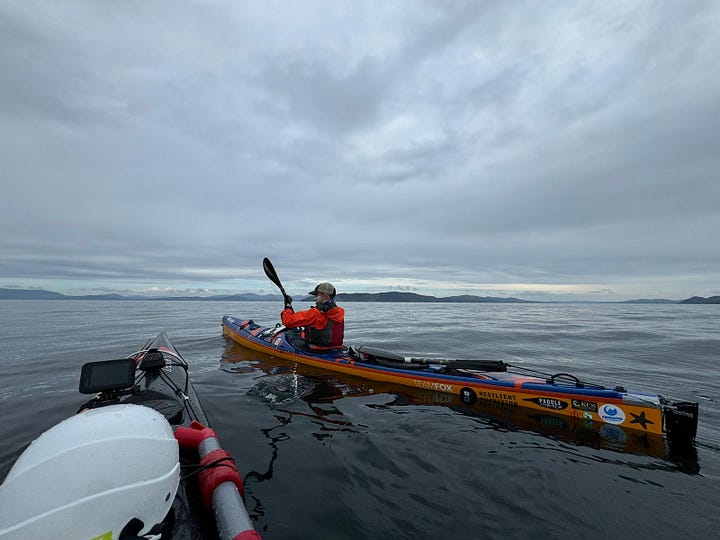
Taking the scenic route in the southwest can mean long weather delays, as even the shorter sections are too exposed to attempt in marginal conditions.
With all respect for Ariel’s determination to paddle her trip her way at a reasonable pace, I stressed the importance of getting around the corners that lay ahead the same way that point had been stressed to me by other paddlers last summer.
Comparing notes on the route for the day, I offered a suggestion,
“Aim for Black Ball Head today and get around the corner through Dursey Sound tomorrow. It’s all about getting around that corner.”
That is exactly what she ended up doing, pushing a little farther and positioning herself much better for the weather days that followed soon after.
Sunday scaries
We hugged the Head through a gap where waves break on either side, even on the calmest days.
Passing Mizen, our compasses indicated north. The south wind never picked up, and it was Lake Atlantic out there with an occasional set of larger swells to remind us where we were.
We parted ways after we passed Sheep’s Head, a couple of miles offshore. I wished Ariel “fair winds and following seas” and followed a bearing home into Bantry Bay while she continued her crossing to Pulleen Harbour, where she turned and handrailed to Black Ball Head.
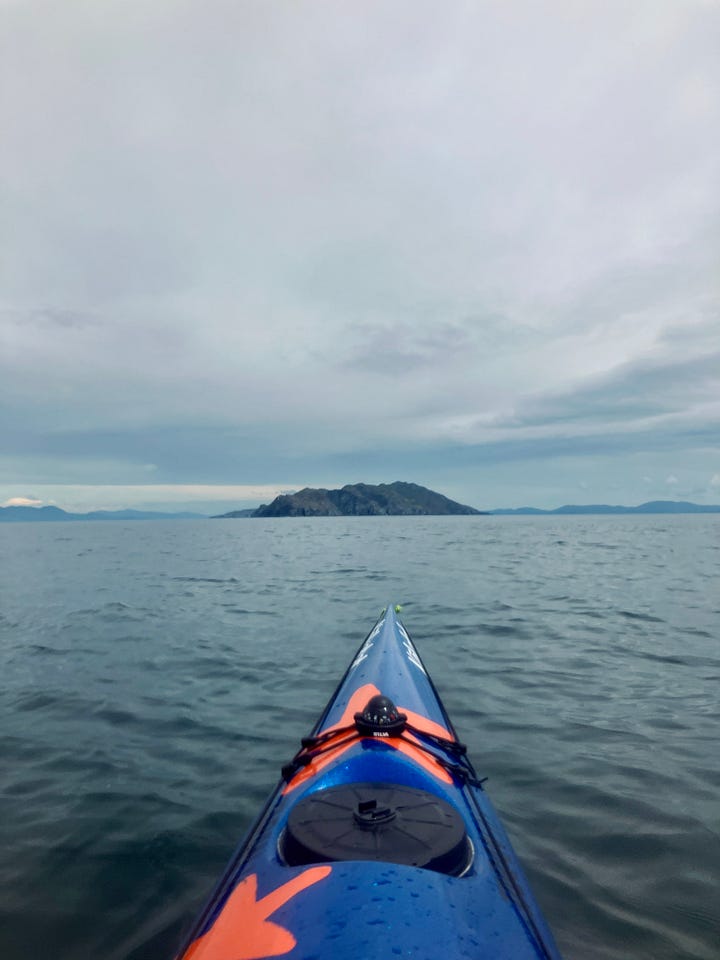

When I reached Sheep’s Head, hikers on the viewing platform at the lighthouse stared at the kayak below just like they had at Mizen. I was still over an hour from anywhere I could land safely.
Back in familiar waters, the hypervigilance of open-crossing mode eased up and was replaced by a different kind of stress as thoughts of my inbox and the coming workweek returned.
P.S. When I’m not having adventures, I’m helping other people write about theirs. If you or someone in your circle has an amazing story to tell, I'd love to hear it. I have some availability for new ghostwriting and editing projects.
— Charlie
The Lap is a fundraiser for The Michael J. Fox Foundation for Parkinson’s Research.
Kokatat is the official gear sponsor of The Lap.
Ration packs and fueling strategy by Resilient Ops.
CH Marine will be providing a VHF radio and other safety equipment.
Camp kit and cooking gas provided by Paddle & Pitch. Wool baselayers by Aclima. Trolley by KCS. REAL Field Meals at a discount from Adventure.ie. Discounts from GreatOutdoors.ie. Expedition coffee by 3fe.

